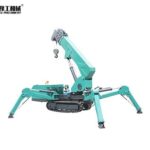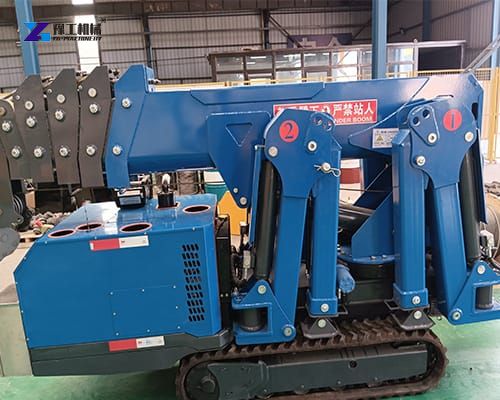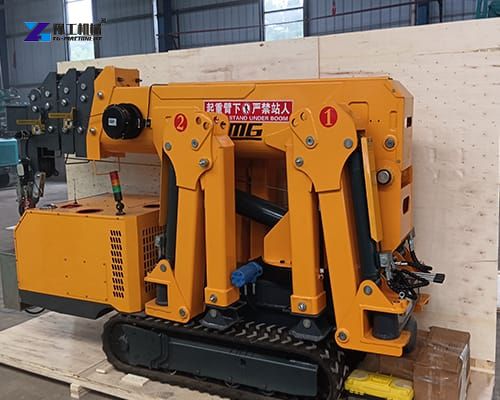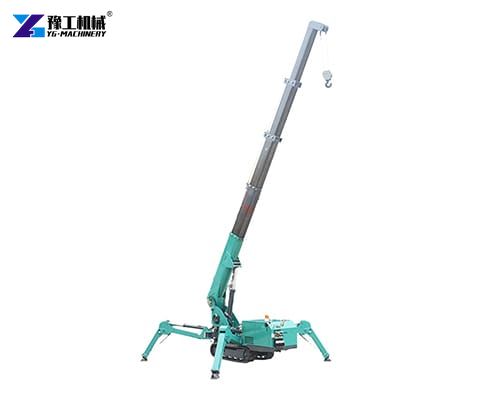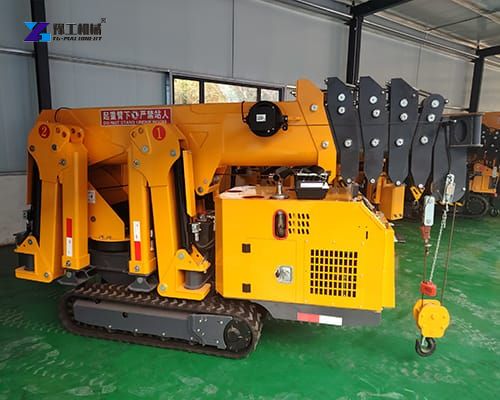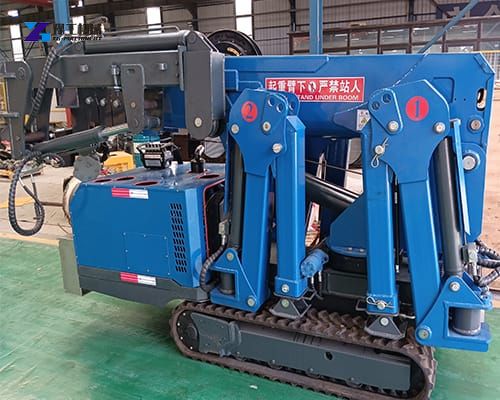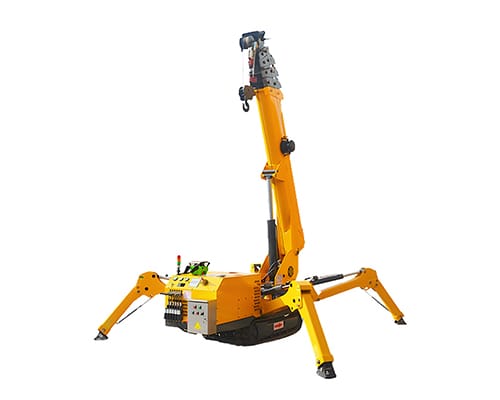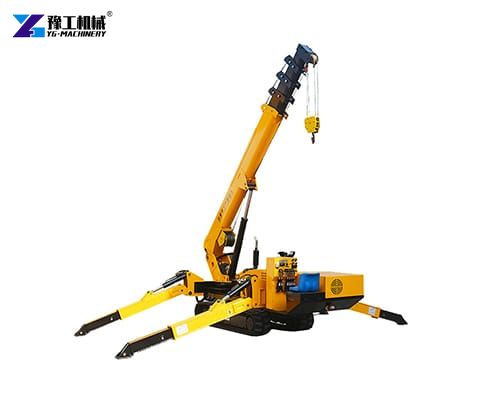Small spider crane is a compact, agile, and powerful lifting solution designed to tackle projects in tight quarters. These machines, also known as mini spider cranes or compact spider cranes, combine robust lifting capabilities with unmatched maneuverability, making them indispensable tools for modern industries. The “small” designation refers to their compact size and lightweight design, which enables them to be transported easily, pass through standard doorways, and operate in tight spaces such as rooftops, inside buildings, or narrow alleyways.
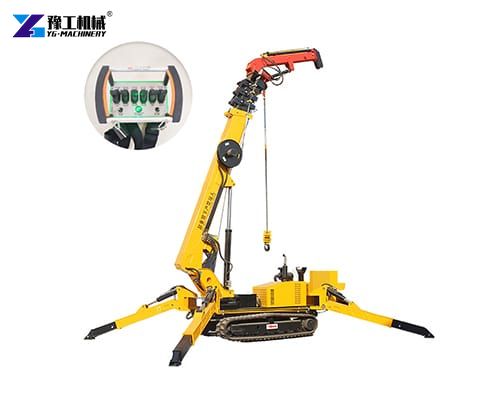

Parameter of the Small Spider Crane
| Specification | 5t |
| Maximum Working Radius | 14m × 0.5t |
| Maximum Above-ground Lift | 16.8m |
| Hoisting Device | Hook Lifting Speed: 12m/min (4 ropes) |
| Wire Rope Specification: Φ11mm × 80m | |
| Telescoping Device | Boom Type: 5-section boom, U-shaped structure |
| Boom Length Range: 4.7m–16.5m | |
| Full Extension Time (12.3m): 54 sec | |
| Luffing Device | Boom Angle Range/Time: 0–78° / 13 sec |
| Slewing Device | Rotation Angle/Speed: 0–360° (continuous) / 38 sec |
| Outriggers | Operation Mode: Manual rotation + hydraulic extension + auto-leveling (two-stage legs) |
| Maximum Extension Range (mm): Left/Right (7800), Front/Rear (3600) | |
| Traveling Device | Travel Mode: Hydraulic motor-driven |
| Travel Speed: 0–2.5 km/h | |
| Gradeability: 25° (36%) | |
| Engine | Type/Displacement: 490 |
| Starting Method: Electric start | |
| Operating Temperature Range: -5°C to 40°C | |
| Fuel/Capacity: Diesel/ [value missing] | |
| Battery Capacity: 12V 45Ah | |
| Control System | Operation Modes (Boom/Outriggers): Manual control, manual travel (remote control optional) |
| Control Features: Manual operation (remote control optional) | |
| Overall Dimensions | Length 5m × Width 1.5m × Height 1.9m |
| Weight | 6200kg |
| Track Dimensions | Length 2600mm × Width 400mm |
| Optional Accessories | Torque limiter (optional) |
Advantages of Using a Small Spider Crane
- Maneuverability
Traditional cranes require ample space to operate, but mini spider cranes thrive in confined areas. Their narrow profile allows access to basements, attics, and multi-story buildings via elevators or stairwells. - Cost Efficiency
Renting or purchasing a small spider crane is often more economical than deploying a larger crane. Reduced setup time, lower fuel consumption, and minimal labor requirements translate to significant cost savings. - Enhanced Safety
The stability provided by adjustable outriggers and remote operation minimizes the risk of accidents.
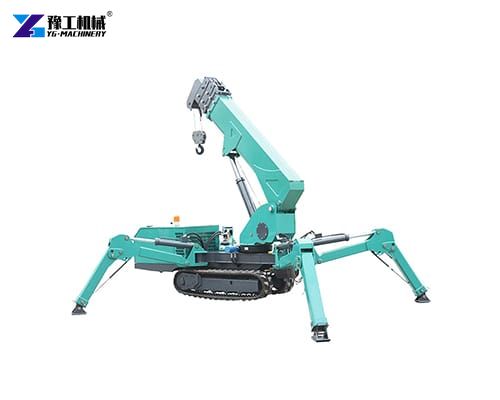
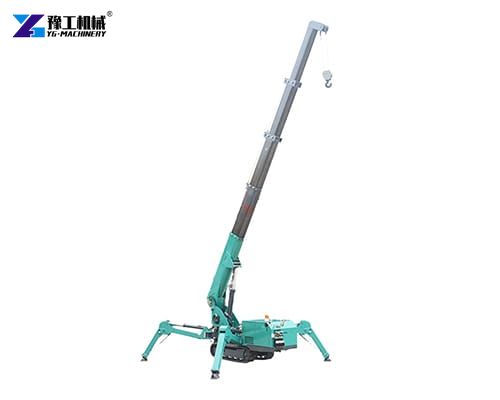
Applications Across Industries
The versatility of small spider cranes makes them suitable for a wide range of applications:
- Construction and Renovation
Glazing Installation: Lifting heavy glass panels in high-rise buildings.
HVAC Work: Positioning ductwork in ceilings or rooftops.
Masonry: Handling stone or brick in historical restoration projects. - Landscaping and Urban Design
Installing sculptures, fountains, or trees in public parks.
Lifting materials in residential gardens with limited access. - Event Management
Setting up stages, lighting rigs, or marquees in crowded venues.
How to Choose the Right Small Spider Crane?
Selecting the perfect model requires evaluating several factors:
- Lifting Capacity
Match the crane’s capacity to your heaviest expected load. Overloading risks safety and machinery damage. - Dimensions and Weight
Ensure the mini spider crane can navigate your workspace. Check folded height, width, and weight for transportation and storage. - Power Source
Opt for electric models for indoor use or noise-sensitive areas. Diesel offers mobility for outdoor sites without power access.
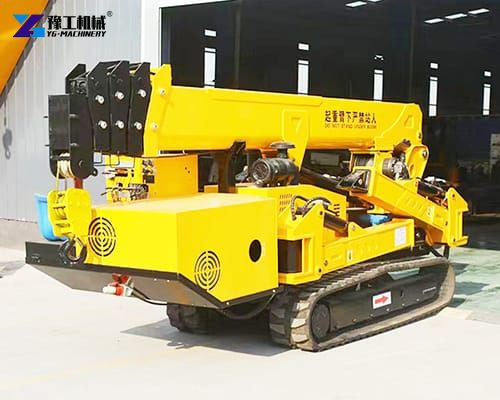
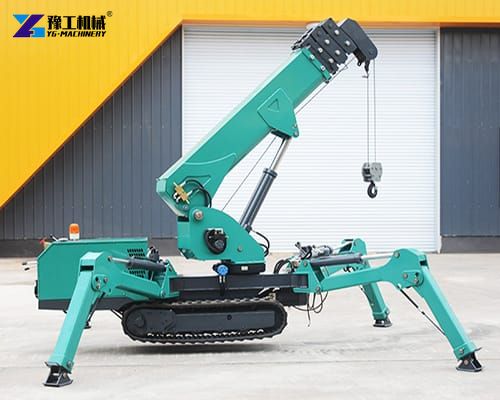
Maintenance Tips for Longevity
- Daily Inspections
Check hydraulic hoses, outriggers, and tires for wear. Test emergency stops and remote controls. - Lubrication
Regularly lubricate moving parts to prevent friction and corrosion. - Storage
Store the crane indoors or under a weatherproof cover to protect it from the elements.
Related Machines
There are various models of the small spider cranes, like mini spider crane, mini tracked crane, mini crawler crane for sale, and so on. Among them, the hot models are 3 ton, 5 ton, and 8 ton types. If you need other model, welcome to contact us for more details. We have exported it to America, Poland, Hungary, Bulgaria, Chile, Russia, UAE, and so on.

